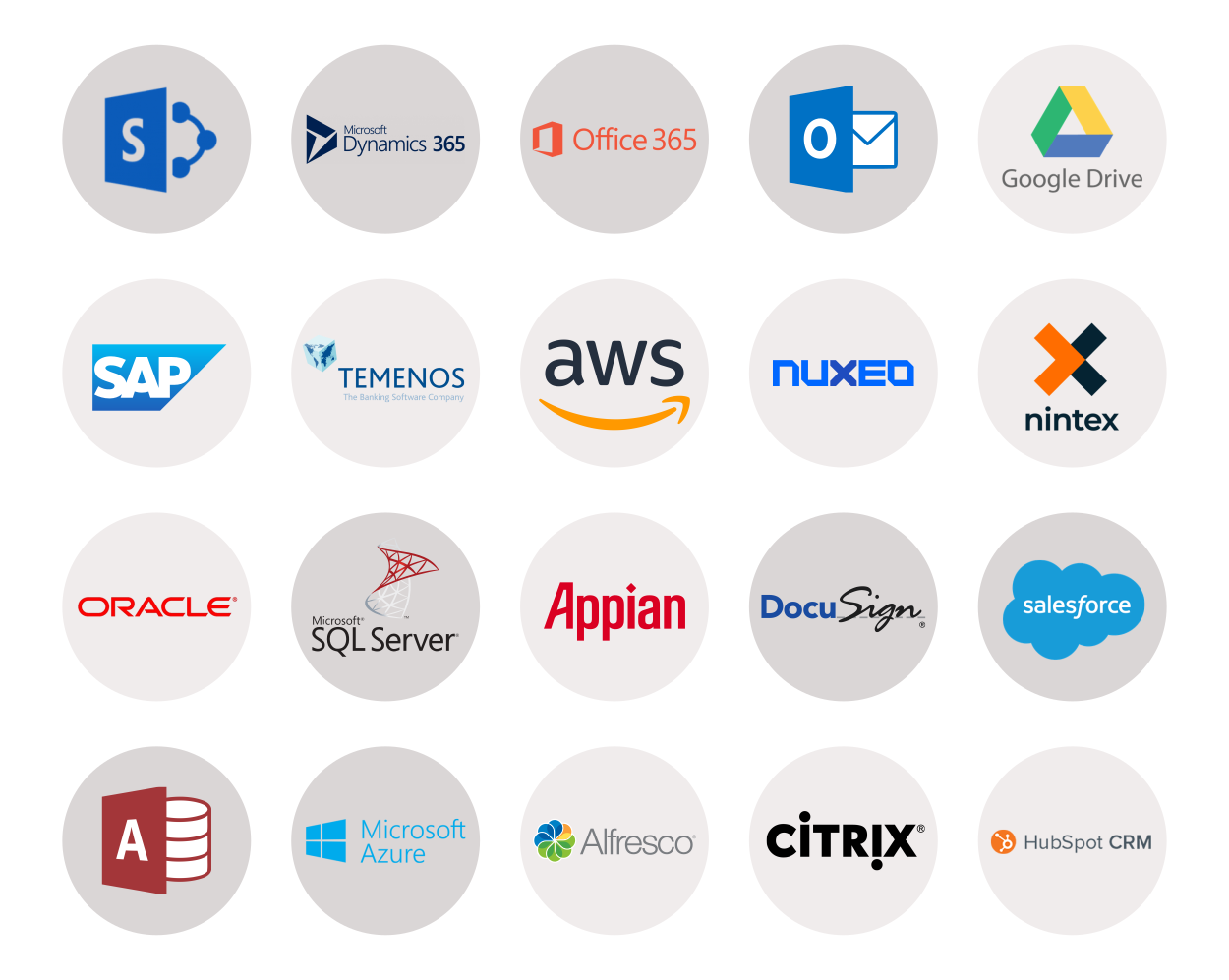One of the many benefits of effective document automation solutions is that they work with the organization's data and other content, as well as with its existing applications.
Salespeople may be working in their CRM system, entering the details of what they sell, to whom they sell it, and for how much. To get this information to the customer, they must create a quote or a sales proposal. To do this, they must get all that information about the customer, the product(s), the pricing, the line items, etc. out of the CRM and into a proposal by copying and pasting or via manual transcription. There may also exist a need to incorporate or attach external documents, such as product brochures.
How much better - in other words, how much easier, more accurate, and less time-consuming - would it be to simply click a button in the CRM and have the document automatically generated, using the data and other content that resides in the CRM or other systems?
Most organizations have HR systems, contract management systems, underwriting systems, etc. to support related business processes as appropriate. However, when it comes to the creation of the documents that those business processes must naturally produce, they often start from scratch, requiring significant manual work and modification to obtain accurate documents.

Document automation solutions rarely work as standalone systems. This is a small sample of applications and services which document automation products may need to integrate with.
Only rarely would an organization run a document automation product as a standalone system. For that reason, it is essential that document automation solutions maintain the ability to be integrated with existing systems, and with existing data and content repositories.
The range of existing applications, data, and content sources can be wide. Some are built on modern technologies, while some, by virtue of their longstanding and critical necessity to the business, may be legacy systems. Integration with modern technologies using standard interfaces is very much taken for granted, but it is critical to also consider whether the document automation solution can support integration with legacy systems that will be a necessary part of the creation of a document.
It is also important for an automation solution to be able to utilize multiple data and content sources to generate a single document. Customer details may come from the customer database. Branch address details may come from a SharePoint List. Product parameters may need to be retrieved from an ERP system. The automation solution is the glue that makes it possible to assemble data from different and very disparate sources, then generate the document in a single process with no manual data lookups, and no copying and pasting.
Additionally, business process management systems and other workflow applications are often the software that drives document processes. Documents require approvals, or even multi-stage approvals, and different sections of the document may need to be reviewed by different people. There may also be tasks in these workflows that require someone to create a document, send an email, create web content, etc. It should be possible to replace these tasks with the document automation solution, which can ntegrate with BPM or workflow systems.
The automation solution is the glue that makes it possible to assemble data from different and very disparate sources, then generate the document in a single process with no manual data lookups, and no copying and pasting.
A similar scenario would apply to any other system which the document automation solution is required to integrate with. When choosing a document automation solution, therefore, it is necessary to ensure that it provides an open interface on all required levels of functionality. At the very least it must have a comprehensive API for document creation (both automated and user-driven), template management, document management, data integration, application security, and reporting. These API capabilities become especially important if the document automation solution is envisaged as an enterprise wide solution, which can be accessed by many different areas of the business using a range of applications, data and content sources, and access methods.
One useful approach is to involve the organization's IT team in reviewing the product's integration capabilities. The IT team will usually have a solid understanding of the applications that are used organization-wide, and will be able to accurately judge whether the integration capabilities of the automation solution will work across the organization.
In the next section, we will review how well templates need to be managed, considering the varying number of templates and people who need to access them.

